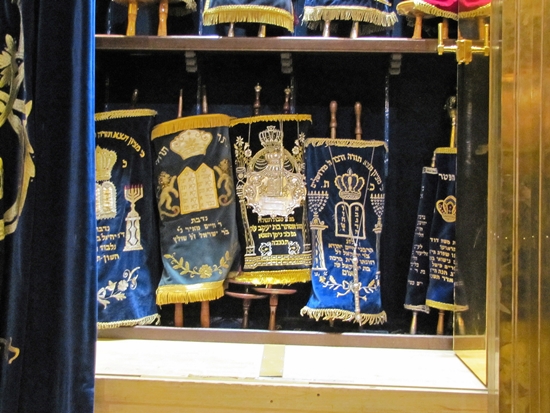This week’s Parshah contains the commandment to build a Tabernacle for G-d, what the Pesukim call the “Mishkan.”
Ramban [25’ 10’] comments on a seeming inconsistency in the text–when G-d issues the command to build the various components of the Mishkan [such as the Menorah and the copper Altar], the command is always given in the singular syntax “Ve’Assita”–which translates as “You (singular) shall make; the exception is, when G-d tells Moshe about the Aron\Ark, where the Possuk says “Ve’Assu”, which means “And you (plural) shall make.” Why does the Torah use a different verb when commanding the building of the Aron?
Ramban offers, that we find that the Aron\Ark represented the entity that unifies Am Yisrael–the Torah. Hence, the Luchot\Tablets containing the ten commandments were placed inside the Aron; additionally, Daat Zekeinim [ad. loc.] quotes the Gemara [Yoman 72B] that states: “[Why was the Aron constructed with a wooden core and surrounded with golden covers on the inside and outside? To serve as a metaphor that] any Torah Scholar that is not authentically pure with his internal intent, and equally as sincere with his external actions, is not considered a Torah Scholar.
Based on the above information, Ramban writes that insofar as the heart of the Mishkan\Tabernacle was the Aron\Ark, and the core of the Aron\Ark was the Torah, all Jews deserved an individual connection to the Aron\Ark; therefore, the Torah specifically commands by the Aron\Ark “Ve’Assu–and you [plural] shall make.
Ramban continues and says that the way this connection to the Aron\Ark would be forged was through either giving architectural counsel to Betzalel [the builder of the Mishkan\Tabernacle], or through donating a trinket of gold specifically to the fund that was designated for the Aron\Ark.
Fascinatingly, the Talmud in Megillah 10B proves mathematically that the Aron\Ark took up no physical space within the confines of the Mishkan–as the focal point of the emanations of G-d’s presence, the Aron\Ark existed outside the physical dimensions of space and time. The word “Aron” is rooted in the Hebrew word for light, and light also manifests in this world outside the typical spatial dimensions physical beings relate to.
Astoundingly, the Possuk [Proverbs 6’ 23’] states that “Mitzvot are candles and Torah is Light”, hence it is most appropriate the housing for the Tablets of light was called the “Aron.”
Lastly, the Verse [Isaiah 49’ 6’] states that the Jews, as well, are supposed to be a Light unto the Nations”–the responsibility implied from this Possuk is rooted in our connection to the truest light of this world, the Torah, as R’ Saadyah Gaon famously wrote “The Jewish nation is a nation only by virtue of the Torah.”
May we merit to continue the Mesorah of Am Yisroel and remain connected to the Torah as we seek to bring the true redemption, “And all of Tzion’s children will return within its borders,” speedily in our days!
